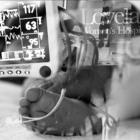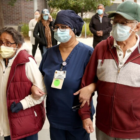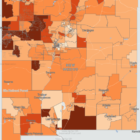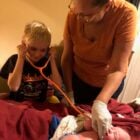Fathom
Cómo investigamos las tasas de mortalidad de los bebés extremadamente prematuros en los hospitales de maternidad más grandes de este estado
|
Read in English. ProPublica es un medio independiente y sin ánimo de lucro que produce periodismo de investigación en pro del interés público. Suscríbete para recibir sus historias en español por correo electrónico. New Mexico In Depth es miembro de ProPublica Local Reporting Network. En una investigación que llevaron a cabo New Mexico In Depth y ProPublica durante un año, se descubrió que los bebés más pequeños y prematuros nacidos en el Hospital de Mujeres Lovelace de Albuquerque, morían en proporciones dobles que los de otro hospital situado a pocos kilómetros de distancia, el Hospital Presbiteriano (Presbyterian Hospital).
El hospital Lovelace, institución con fines de lucro, y el Presbyterian, organización sin fines de lucro, son los mayores centros de maternidad de Nuevo México. Fuentes de los datos
Los datos más completos sobre los resultados hospitalarios de bebés recién nacidos quedan recopilados en la Red Oxford Vermont (Vermont Oxford Network, VON), una colaboración internacional de investigación de unidades de cuidados intensivos neonatales.








